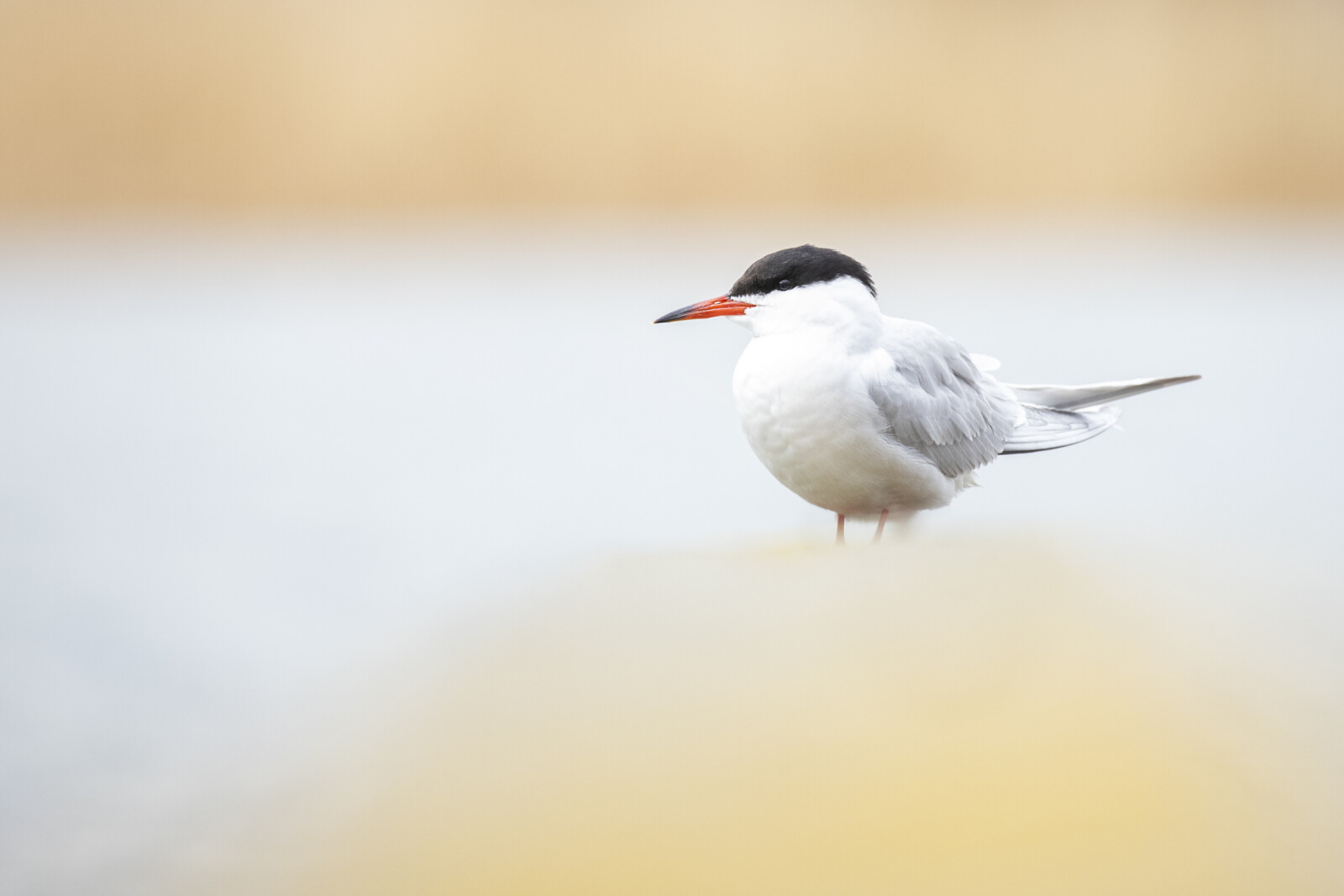Common tern
- Common tern, Osmussaar
- https://linnuriik.ee/wp-content/uploads/2021/09/Jogitiir-Kauro-Kuik-1024x683.jpg
- Keemu linnud
- https://linnuriik.ee/wp-content/uploads/2021/09/20_Jogitiir_080729aa185417_Osmussaar.mp3
Common tern. Photo: Kauro Kuik
Introduction
Latin Sterna hirundo L.
Estonian Jõgitiir
Also knows as: sea swallow, pictarnie, tarrock, tern
Status in Estonia
Breeding and migratory bird.
Description
The common tern is very similar to the Arctic tern. The common tern has a longer beak, legs, head and neck and slightly bigger wings. In summer, the beak is orange-red with a black tip, the underside is a pale grey with little to no contrast to the white cheeks, the tail feathers do not reach beyond the wing tips, the primary feathers are white below and the rear edge of the wing is widely or disjointedly darker. In winter, the forehead and underside are white, the front edge of the wing bend is dark and the beak is entirely black.
Size
Body length 34–37 cm (incl. tail feathers 5–8 cm), wingspan 70–80 cm, body mass 100–145 g.
Similar species
Arctic tern.
Distribution
It is widespread in the Northern Hemisphere near all kinds of water bodies. The distribution range includes all coastal areas and small islands, from the tundra zone to subtropical areas. The common tern can be found throughout Europe, from the northern part of Scandinavia to the Mediterranean coast and from the west to the east of the Eurasian continent. It is common in Estonia on small islands but can sometimes be see inland.
Population
Estonia has 5000–7000 breeding pairs.
Occurrence in Estonia
It arrives in Estonia during April. Since the common tern remains close to the water at the start, it travels inland much later, around the May holidays. It leaves early; the autumn departure and migration begins at the end of July and lasts through the entire month of August. The last ones generally leave in the first half of September.
Diet
It is mainly carnivorous. Aside from fish, molluscs and insects, it also consumes crustaceans and worms. It mainly feeds invertebrates and small fish to chicks. Kleptoparasitism occurs more often than in other sub-species: it steals a fish from the beaks of fellow sub-species. To accomplish this, they launch a rapid dashing attack on a bird exhausted from fishing. It’s effective around 10% of the time, but it requires so much energy that it is only worthwhile for large fish or when fishing is difficult due to fog or rain.
Habitat
It lives along sea and inland water bodies, especially on islands.
Nesting
The nest is built on islands or on the banks of rivers and lakes under the cover of more rich vegetation, but it also doesn’t mind being in areas with trees and bushes. It nests in colonies; nests are typically three metres apart. Three eggs are laid in a hollow on the ground lined with plants. Incubation, like with other terns, begins when the first egg is laid and lasts between 18–23 days. Younger chicks frequently starve to death, but others develop flight abilities by the 24th day of life. They wander from nest before that but always return to be fed.
Conservation status and protection
It belongs to the protected species of category III. The same issues that threaten other ground-nesting bird species on the islands apply here: foxes lingering on the islands, crows and seagulls stealing from the nest, while inland the problem is minks. Agricultural pollution also has an impact, which is why the water surface of many lakes is overgrown with plants and unsuitable for hunting fish. Pollutants consumed by prey have an impact on birds as well. Furthermore, as many islands erode and are taken over by reeds, their breeding grounds are becoming increasingly limited.
Distribution and population in Lääne County
The common tern, like the Arctic tern, is a common breeding and migratory bird in Lääne County. In bays and larger lakes, it is a far more common and populous species than the Arctic tern. However, common terns can also be found in large numbers along the coast.
Common terns can be found practically anywhere along the Matsalu and Haapsalu bays. Spring and autumn migrations can be seen at Cape Põõsaspea and Cape Puise.
